The State of the City: How’s Detroit Doing? [LIVE STREAM]
Mayor Duggan gives his 2018 address. Listen at 101.9 FM, watch it here.
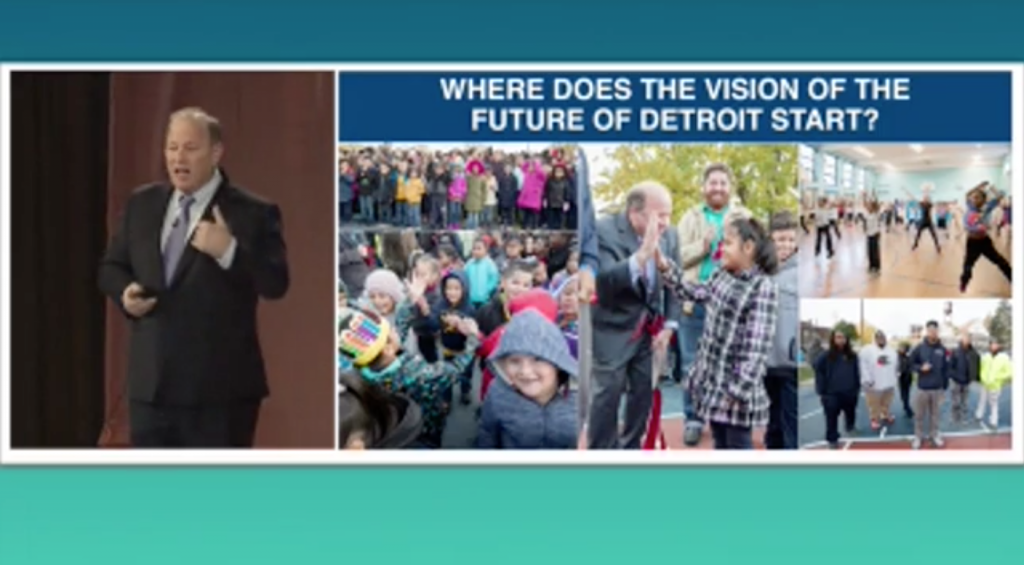
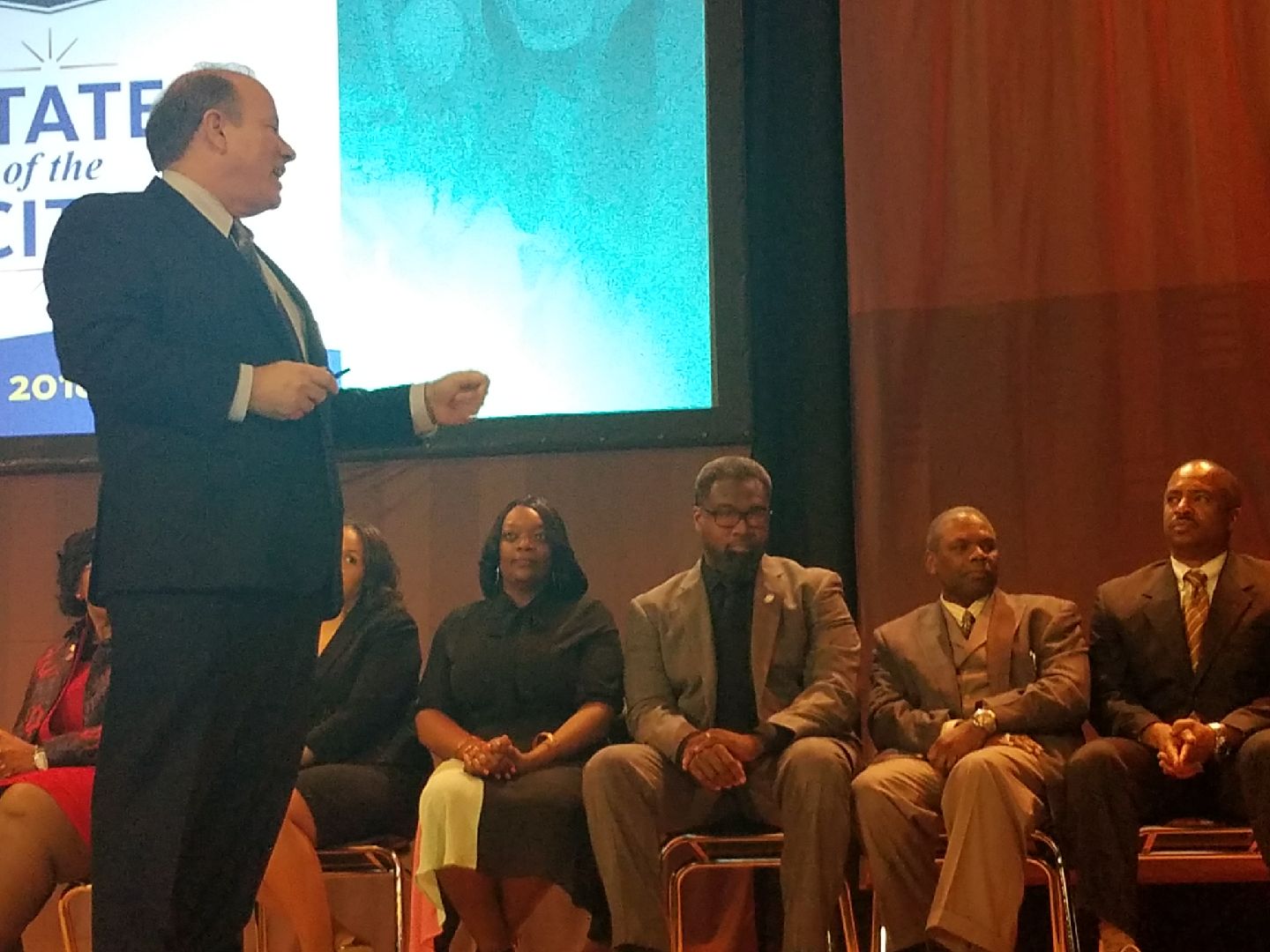
Speaking at Western High School on the city’s southwest side, Mayor Mike Duggan gave the first “State of the City” speech since Detroit voters returned him for a second term.
Mentioning “those who stayed” several times throughout the 56-minute speech, Duggan described a few remaining challenges but mostly touted what he called the successes of his first term.
“I told you the first four years, we were going to try and fix the services,” he said. “Now we’re talking about building one Detroit for all of us and we’re going to do it together.”
Watch a replay of the speech:
Duggan opened his speech pledging to deliver it differently.
“This is going to be maybe a ‘State of’ speech you’re not used to,” he said, promising the speech would have “a lot of substance” and would present a clear plan for where his administration is taking the city.
But he started with where the city has been.
“The 10 years before I was elected, this city lost 244,000 people. How big is that? We lost 26 percent,” of the population, Duggan said. By comparison, after Hurricane Katrina, the population of New Orleans decreased 17 percent.
“When you’re losing 1,000 people a month, that’s no way to run a city,” Duggan said. “It left us in a position where we were no longer able to pay our bills.”
Not only did the population loss present challenges for the city, Duggan cited the unemployment, poverty and murder rates as being the highest in the country.
Then, the rest of the speech to the crowd of about 850 included his descriptions of successes.
Following are excerpts of what he said.
On the City’s Youth:
Losing and underfunding schools, parks, recreation centers and youth facilities has caused problems, Duggan said. But the Detroit Promise is a success story since it guarantees college tuition for many of the city’s students. “We’ve implemented that,” he said. “We became the first major city in American with a college guarantee.”
Through Detroit Promise, the mayor said, there are currently 459 students in four-year universities and 723 in community colleges. “Now with the action of City Council, a little of the property tax growth that everybody pays goes in,” he said. “We are going to make sure that our kids not only go to school but they succeed at school.”
On Vocational Programs:
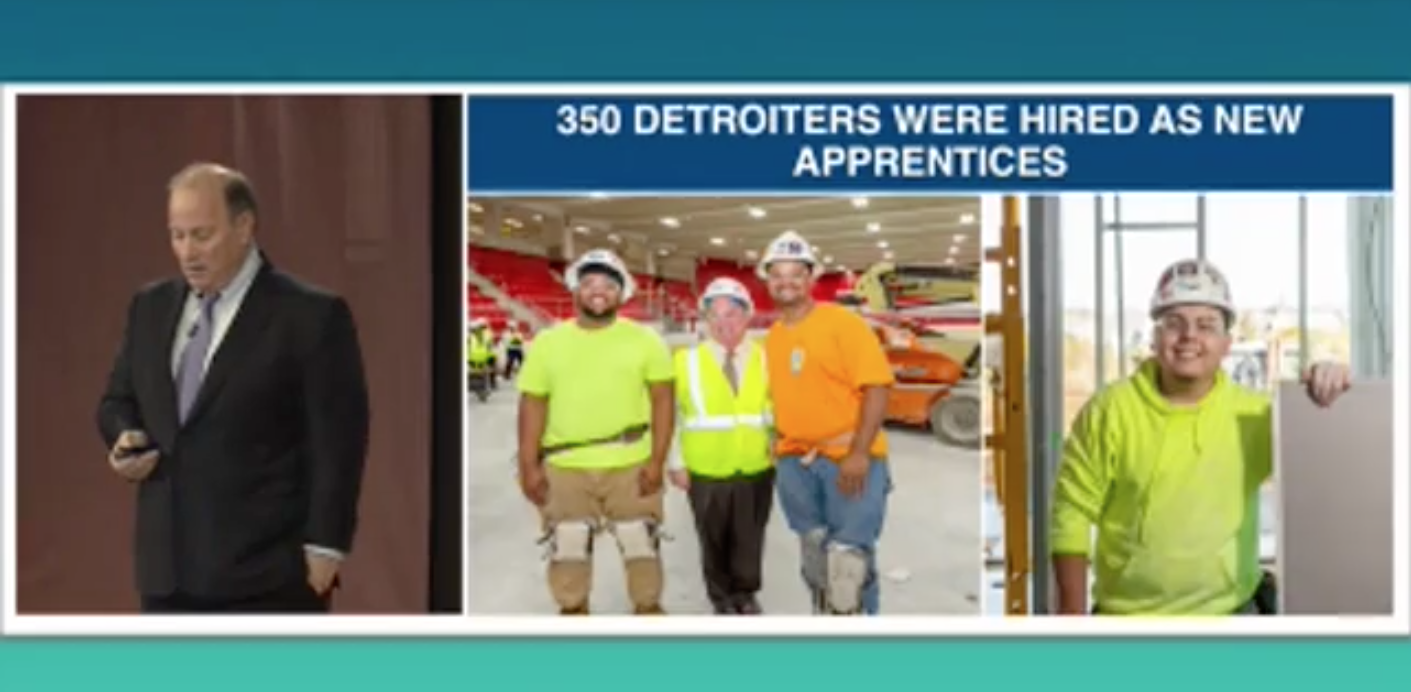
Private donations are funding career and technical education programs, the mayor said, with electrical, plumbing and carpentry programs underway at the Randolph Career and Technical Center, which is part of the Detroit school district. “Next year we’re going to add robotics,” the mayor said. About 300 students enrolled last fall, and 400 are expected for the next academic year.
On Where Detroit Children Go To School:
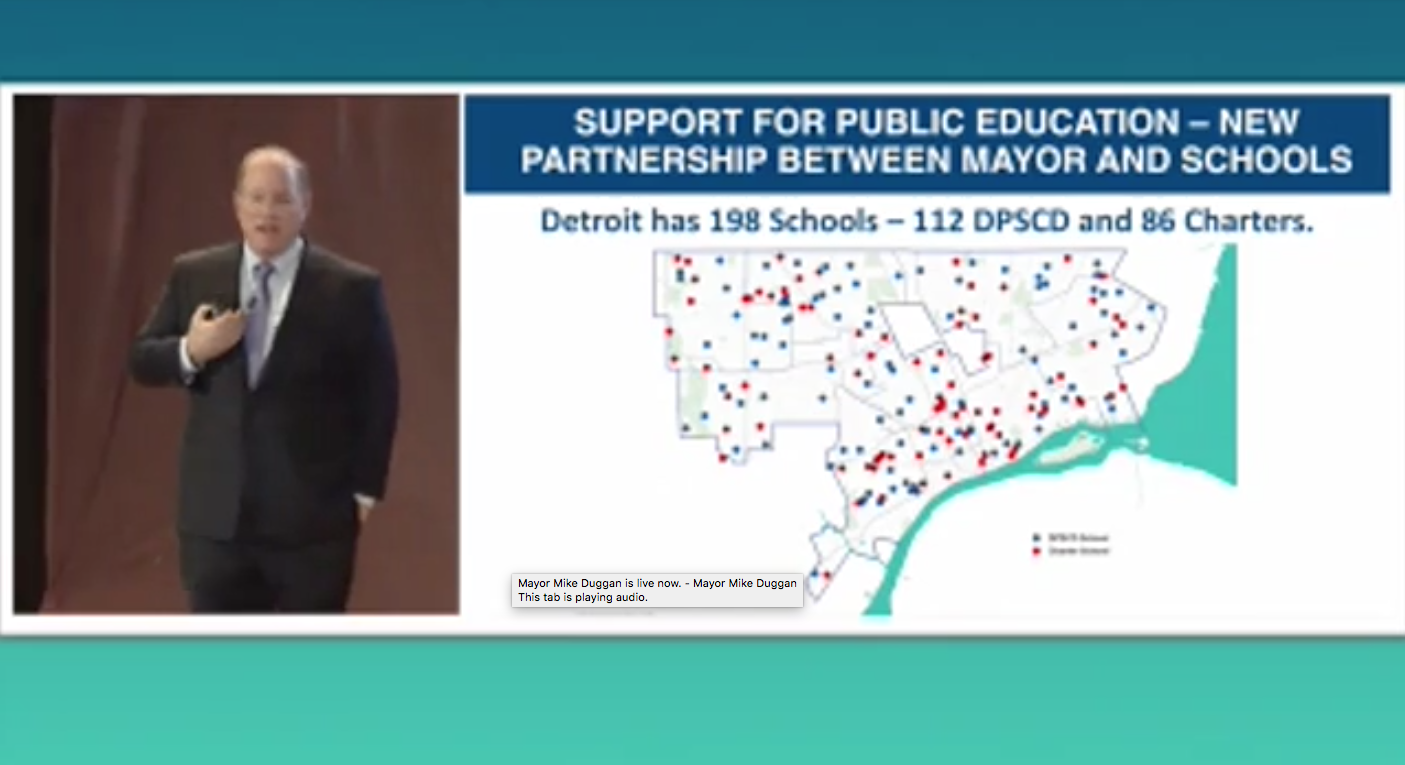
“I have said many times, I believe in school choice. I believe we need to have quality DPS schools and quality charter school I’m going to support both of those,” he said.
Currently in the city, 112 schools operate as part of the Detroit Public Schools Community District and 86 are charter schools.
About 51,000 students attend the public district and another 32,000 are enrolled in charter schools in the city, according to the mayor. But that leaves some 32,500 who go to schools in the suburbs, the mayor said.
“That says that what we’re doing is not working,” Duggan said.
His solution: getting the Detroit district and the 86 charter schools to work together.
“My role is going to be to support them, not to choose sides,” he said. “So you never again have a kid riding a bus for an hour to go to school in another location.”
On Detroit’s Violence:
“Everything starts with the officers we’ve lost in the last few years who we’re never going to forget,” Duggan said. “They sacrificed for something they love: to make this city safer for everybody.”
He cited the declining number of homicides, but said the city has room for improvement in comparing rates with other cities. “Every city in America does not live with this violence,” he said.
He touted the Ceasefire project, which has held dinner meetings with current gang members and police officers in two precincts and is expanding. The message: “We have a lot of law enforcement coming after you if you commit a crime with a gun. But we’ve also got help for you,” Duggan said. “For an hour we talk about the choices of prison or the choices of what you can do for your life. … At the end of the night, these young individuals sit down and eat dinner with the police.
On Project Green Light:
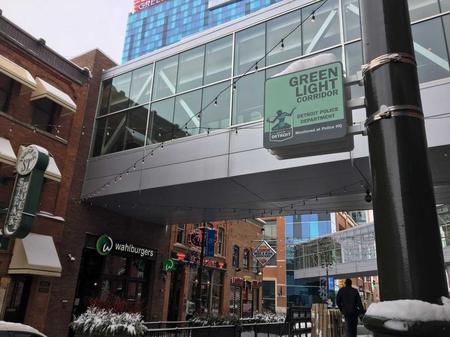
In two years, 300 business have signed up for the program, which will soon be more concentrated in parts of the city, he said.
“Instead of all those individual flashing green lights, you’re going to see more and more corridors with subdued kind of lighting,” he said. “Every week we get carjackers, armed robbers in several cases because this is working.”
Due to the program, in part, carjackings are down 40 percent, according to the mayor.
On Housing Guarantees:
The city has worked to keep residents, many senior citizens, in their homes as development projects have progressed. “You stayed, so we’re going to make sure you know that you’re valued,” he said.
But the city needs more housing, he said, so new projects have guarantees for affordable housing units including some in Midtown, Riverfront and New Center.
“This is the city we’re working to build, he said.
The city would spend $50 million for the effort, which would be matched by philanthropy, the mayor said. Still, more is needed.
“We believe we can raise this. This is what a city needs to do if you’re going to build a city that’s meant for everybody,” he said. “We’re going to need all the affordable housing for all the jobs moving back.”
On New Businesses Hiring Detroiters:
Major businesses have come downtown, the mayor said, “But we’re starting to see them spread out a little bit.”
He listed several former-abandoned properties that have been converted to manufacturing facilities, warehouses, and retail space, adding some 25 companies have added between 100 and 500 jobs each.
“We have not seen this kind of movement into the city in decades,” he said. “Who’s going to get the jobs? You know what my answer’s going to be: how about the people who stayed? Can we as a city give the priority to the people who stayed?”
On the Current 4,000 Job Openings in the City:
Saying they’re largely in health care, transportation and technology, Duggan described the city’s jobs training program for Detroiters.
“Whatever kind of job is in your heart, there’s a good chance we have the training plan for you,” he said. “We are doing everything we are legally allowed to do to give preference to Detroiters.”
Those efforts include paying for training for city residents, ensuring 51 percent of the work on city contracts is done by residents, and “using our purchasing power to get jobs,”’ Duggan said.
On Returning Citizens Joining the Workforce:
Some 25 companies are hiring returning citizens (as former prisoners are called by advocates) in the city, the mayor said. “If you go to Detroit at Work as a returning citizen, we will steer you to the training and if you’ve got one felony from more than five years ago, we’ll help you with expungement services to get a clean record.”
On Transit:
“We need to start to think and function like a region,” Duggan said.
On the City’s Finances:
“We’re going to be out of active state oversight this spring,” Duggan said, touting the third year of balanced budgets as required by the bankruptcy exit plan.
On the City’s High Auto Insurance Rates:
“I am going to stay with this until we get the car insurance cut,” Duggan said.
On House Demolitions in Neighborhoods:
Some 14,000 houses have been demolished in the last few years, but that work has come with a federal investigation into contracts for the work. Duggan has maintained the fast pace of the work led to the issues, and he addressed that in the speech.
“I feel really bad about all the people who got in trouble because I pushed them to do 8,000 a year, he said.
On What Happens to Abandoned Houses:
About 9,000 residents have bought side lots for $100 each, the mayor said. In addition to the 14,000 demolished homes, some 5,000 abandoned houses have been boarded up, and more than 3,000 have been sold, Duggan said.
“Our goal is to save every house that we can,” he said. “We also have to prevent new vacancies. That means stopping foreclosure.”
He thanked the Wayne County Treasurer’s office and advocacy groups who helped reduce the tax foreclosure numbers from about 6,400 in 2015 to 786 last year.
“We are out now going house to house, person to person. We don’t want you to lose the house. We want you to stay,” Duggan said. “If you want a payment plan, the treasurer will work with you and get a program you can afford.”
Still, another 22,000 houses are vacant. Duggan said that 8,000 of those will be demolished, 2,000 will be sold through the Detroit Land Bank, owners will renovate 1,000 of them, and the remaining 11,000 will be boarded up.
“By the end of 2019, every abandoned house is going to renovated, demolished or boarded,” he said.
Tune in to WDET’s “Detroit Today with Stephen Henderson” program at 9 a.m. Wednesday to hear analysis of the speech and more about the efforts the mayor is expected to describe tonight.
